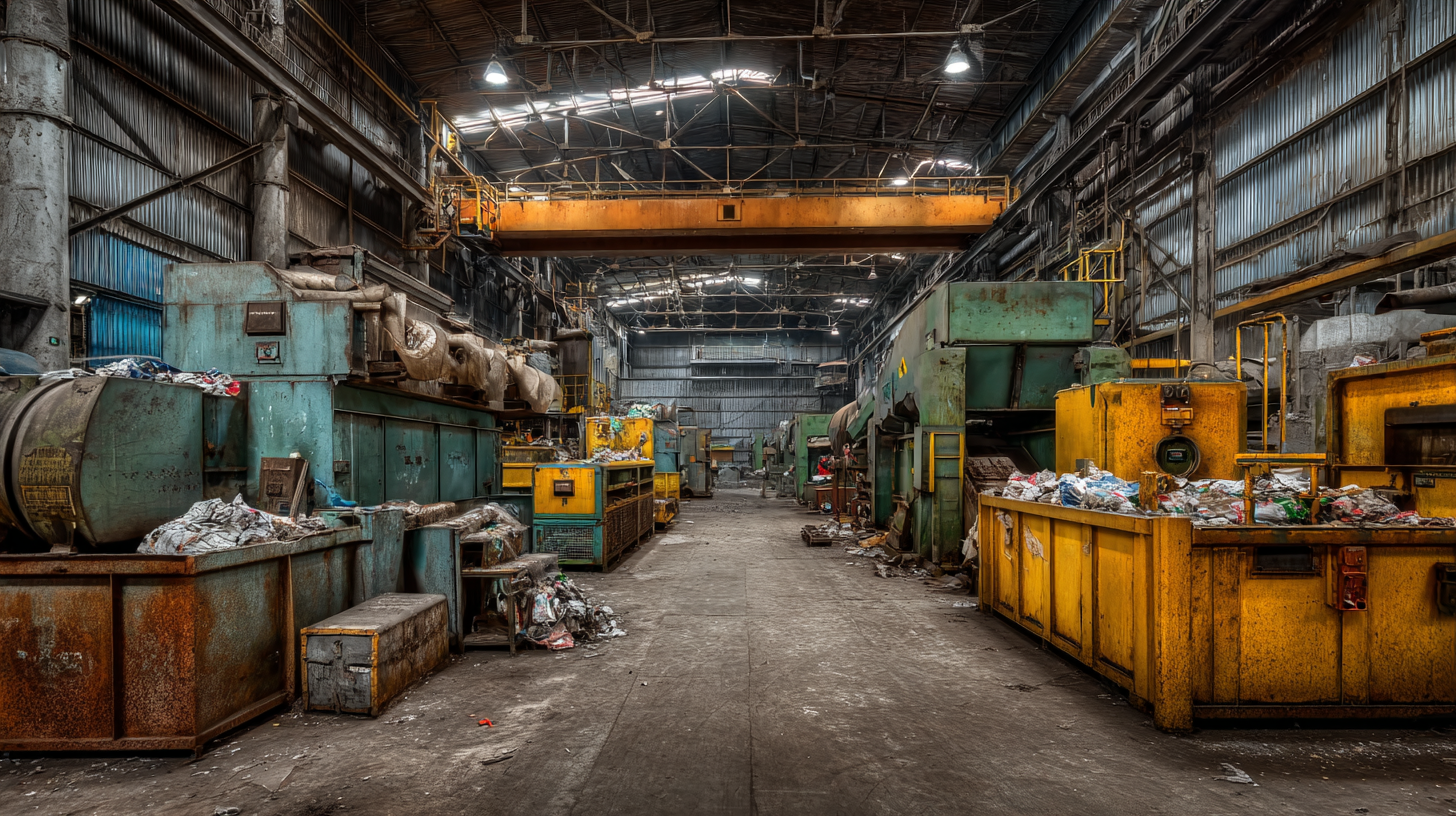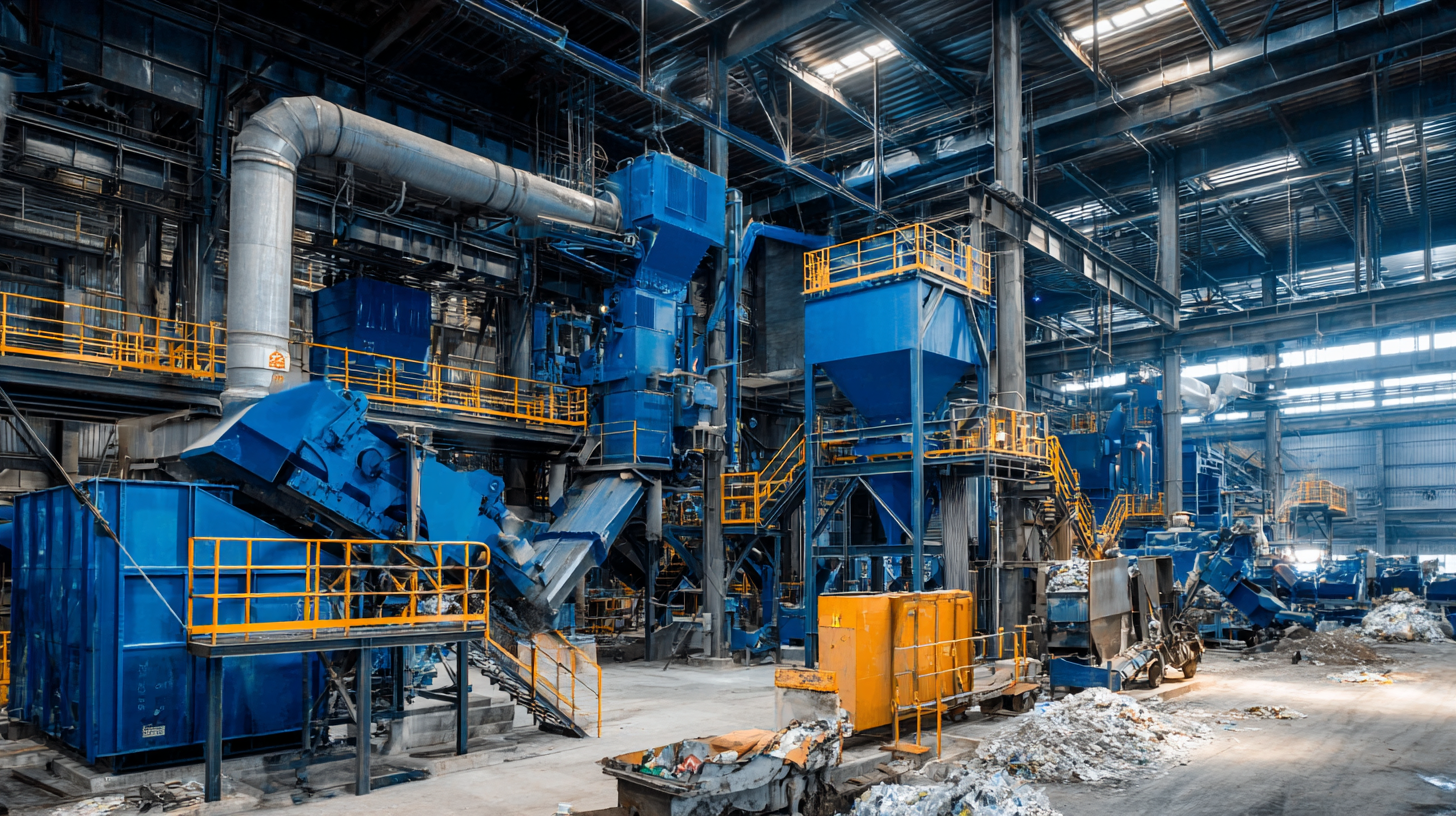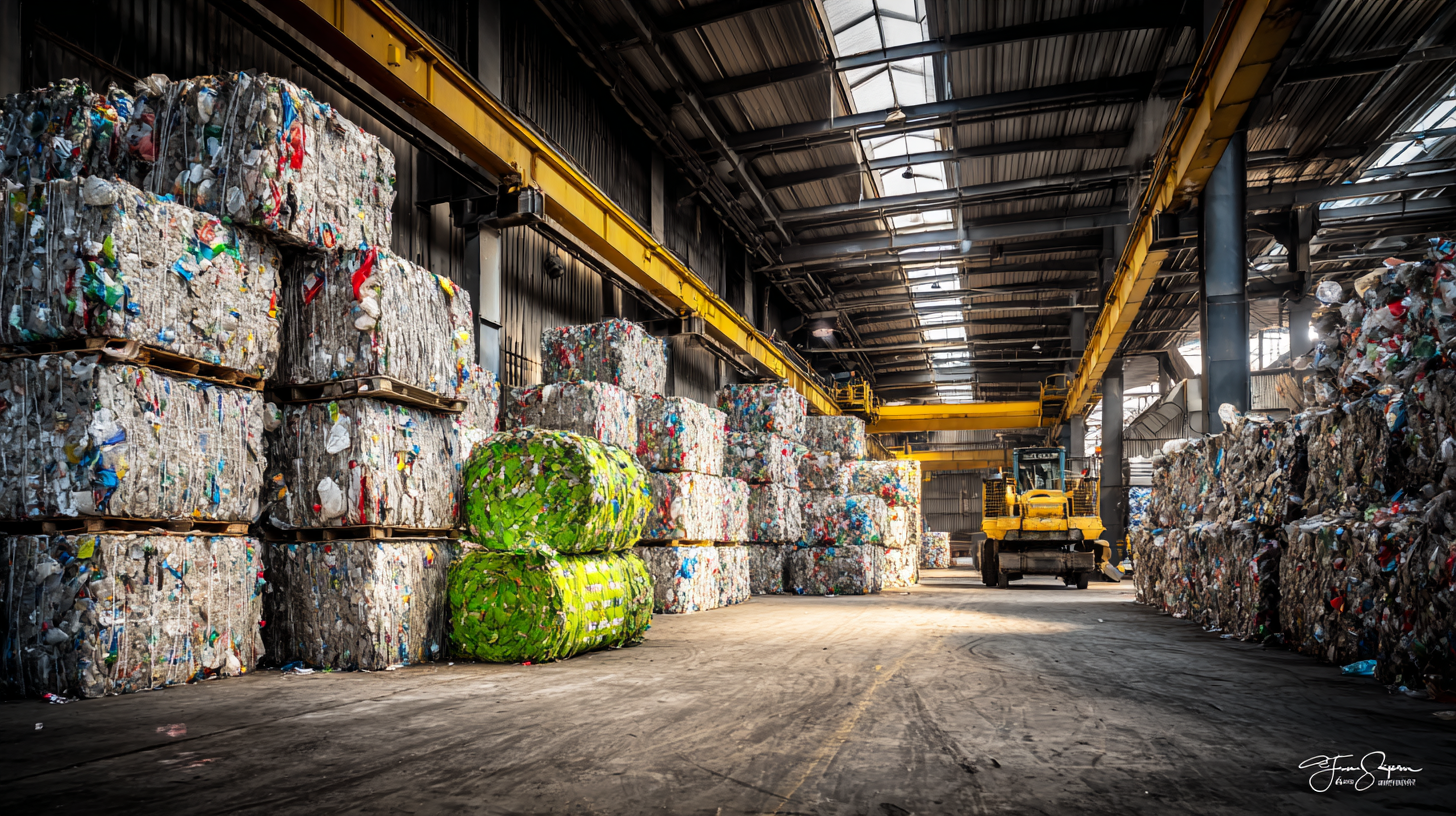In recent years, the emphasis on sustainability has transformed the industrial landscape, highlighting the critical role of
Industrial Recycling in maximizing profits while fostering environmental responsibility. According to a 2021 report by Allied Market Research, the global industrial recycling market is projected to reach
$505.5 billion by 2027, growing at a CAGR of 7.9%. This surge can largely be attributed to rising raw material prices and the increasing regulatory pressures on waste management.
Companies that adopt best practices in industrial recycling not only enhance their economic performance but also contribute to a circular economy where materials are reused and repurposed effectively. Exploring alternatives in industrial recycling practices not only mitigates environmental impact but also opens new avenues for profitability, making it imperative for industries to strategically integrate these practices into their operations.

In today’s industrial landscape, enhancing recycling efficiency is crucial for maximizing profits. Innovative techniques such as advanced sorting technologies and AI-driven analytics can significantly improve the material recovery process. According to a report by the Environmental Protection Agency (EPA), effective recycling practices can lead to a 20% reduction in manufacturing costs, highlighting the financial benefits of efficient recycling operations.
One key strategy involves the implementation of automated sorting systems, which utilize machine learning algorithms to distinguish between different types of materials. This technology not only increases the accuracy of sorting but also speeds up the process, allowing industries to recover a greater volume of recyclable materials. A study from the Journal of Cleaner Production shows that factories adopting such automated solutions saw a 30% increase in throughput and a reduction in labor costs by nearly 15%.
Tips: Regular training for staff on the latest recycling technologies can help maximize the efficiency of these systems. Additionally, establishing partnerships with specialized recycling firms can enhance the recovery rates of complex materials. Staying ahead of industry trends by participating in conferences and workshops can also provide insights into emerging technologies that could further optimize recycling processes.

Sustainable recycling practices are becoming increasingly critical for industrial operations, not just for environmental reasons but also for their significant economic benefits. When businesses implement effective recycling strategies, they can drastically reduce waste disposal costs. By reprocessing materials and reintroducing them into the production cycle, companies minimize their reliance on virgin resources, leading to decreased procurement expenses. This operational efficiency can translate into increased profit margins, making sustainability a financially savvy choice.
Moreover, investing in sustainable practices often opens up new revenue streams. By adopting a circular economy model, businesses can sell recycled materials or by-products that would otherwise be discarded. This not only maximizes resource utilization but also fosters innovation as companies explore new ways to repurpose materials. Additionally, organizations that prioritize sustainability can enhance their brand reputation, attracting environmentally-conscious consumers and investors, which ultimately contributes to long-term profitability. Through these means, the economic benefits of sustainable recycling practices extend beyond immediate savings, positioning industrial enterprises for sustained growth in an increasingly eco-conscious marketplace.
| Strategy | Initial Investment ($) | Annual Savings ($) | Payback Period (Years) | Carbon Footprint Reduction (Tons) | Economic Benefit Ratio |
|---|---|---|---|---|---|
| Implementing Closed-Loop Recycling | 50,000 | 30,000 | 1.67 | 25 | 0.6 |
| Optimizing Material Recovery | 70,000 | 45,000 | 1.56 | 30 | 0.64 |
| Investing in Advanced Sorting Technology | 120,000 | 70,000 | 1.71 | 40 | 0.58 |
| Enhancing Employee Training | 10,000 | 12,000 | 0.83 | 5 | 1.2 |
| Adopting Digital Waste Management Systems | 30,000 | 20,000 | 1.5 | 15 | 0.67 |
In today's manufacturing landscape, leveraging technology to enhance recycling processes is crucial for maximizing profits. Advanced technologies, such as IoT sensors anddata analytics, can significantly optimize recycling workflows. By implementing real-time monitoring systems, manufacturers can track material usage and waste generation, allowing for immediate adjustments to improve efficiency.
Tip 1: Invest in data analytics tools that provide insights into waste patterns. Understanding where and how waste occurs in your manufacturing process can help identify areas for improvement. By refining these practices, companies can reduce waste and enhance their recycling efforts.
Additionally, automation in the recycling process can lead to significant cost savings. Automated sorting technologies can efficiently separate materials, ensuring that recyclable components are processed correctly. This not only enhances recovery rates but also reduces labor costs associated with manual sorting.
Tip 2: Consider deploying robotic systems for material handling. These systems can improve sorting accuracy and speed, further driving down operational costs while increasing the volume of materials recycled. Embracing these technological advancements will undoubtedly position manufacturers to thrive in a more sustainable and economically viable future.

Creating successful industrial recycling initiatives relies heavily on forming strategic partnerships within the industry. Collaborative efforts can enhance recycling efficiencies and maximize resource recovery. According to a report from the National Recycling Coalition, businesses that engage in partnerships with local governments and other organizations can improve their recycling rates by up to 20%. This is often achieved through shared resources, knowledge exchange, and improved logistics coordination, ensuring that materials are processed effectively and economically.
Moreover, leveraging technology through partnerships can also significantly boost recycling operations. A study by the Global Recycling Foundation found that companies utilizing advanced recycling technologies in collaboration with tech firms reported a 30% increase in material recovery rates. These partnerships can lead to innovative solutions such as real-time monitoring of material flows, which significantly reduces waste and improves negative environmental impacts. Ultimately, creating partnerships not only enhances industrial recycling initiatives but also drives profitability by reducing costs and increasing overall operational efficiency.
In the realm of industrial recycling, adhering to best practices for compliance and quality control is essential for not only maximizing profits but also ensuring sustainable operations. Establishing a robust compliance framework helps organizations navigate the complexities of environmental regulations while maintaining operational excellence. Regular audits and training sessions can enhance awareness among employees regarding compliance obligations and best practices in recycling processes.
Tip: Implement a comprehensive training program for your staff that covers regulatory requirements and updates on recycling standards. This will cultivate a culture of compliance and prepare your team to handle materials appropriately, reducing the risk of costly fines and enhancing overall operational efficiency.
Another cornerstone of quality control is the diligent monitoring of recycling materials. By investing in advanced sorting technologies and establishing clear quality benchmarks, companies can significantly minimize contamination and optimize resource recovery. Reliable data tracking can also help in assessing the effectiveness of these measures, ensuring that your recycling operations align with industry best practices.
Tip: Utilize technology to streamline quality control processes. Integrate automated sorting systems and real-time monitoring tools to improve accuracy in material processing and ensure high-quality end products that meet market standards.
